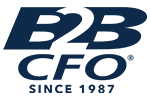
3 Steps to Strengthen the Company’s Financial Health: A CEO’s Guide to Cost Leadership
Posted on June 13, 2025 by Peggy Head
Running a business today is a wild ride—escalating costs, shrinking margins, fierce competition, tariff hikes and countless other pressures that constantly test your resilience. Navigating these challenges can feel overwhelming. There is good news! Strategic approaches exist that can turn economic obstacles into opportunities. By focusing on what you do best and applying three key strategies—sharp cost analysis, smarter resource allocation, and strategic pricing, you can position yourself to be in better control of your business’s financial health. Let’s dive in.
Performing a Cost Analysis: Identifying Savings & Efficiency
Rising costs have become a significant hurdle for companies across industries. Manufacturing expenses, labor costs, fuel prices, and logistics fees continue to escalate, putting financial strain on businesses. However, data-driven cost analysis can help uncover inefficiencies and identify areas where resources can be optimized.
Cost analysis is a critical tool for business owners and management teams, allowing them to identify inefficiencies, optimize spending, and make informed financial decisions. To effectively perform a cost analysis, businesses should start with a detailed cost breakdown, leveraging financial reports, overhead costs, supplier contracts, and operational data. What are your direct costs, variable, fixed and even hidden costs? Alleviating margin pressure is about knowing where your money really goes. Think about these everyday situations:
- That high-selling product might be less profitable once labor costs are factored in.
- Busy hours bring in sales but could be stretching your team too thin.
- Bulk discounts seem great—until storage and inventory costs start adding up.
Performing a cost analysis can initiate even small shifts in perspective that will lead to smarter decisions and bigger wins.
Effective Resource Allocation: Maximizing Productivity & Performance
Every business has valuable resources—financial, human, and operational—but are they being used to their full potential? Smart resource allocation is a key part of cost leadership in uncertain economic times that ensures teams and budgets work efficiently without unnecessary waste.
Before a business can optimize its resources, it first needs to take stock of everything it has: physical assets, financial capital, workforce, intellectual property, and data. Once each of these resources are mapped out, the next step is figuring out how well those resources are being utilized and contributing to the bottom line. Are some departments overloaded while others are struggling? Are expensive assets sitting idle instead of generating revenue?
B2B CFO® Partners excel at leveraging key performance indicators (KPIs) and industry benchmarks to help companies assess efficiency, optimize production output, maximize profit margins, and manage operational costs in comparison to competitors.
If the resource analysis finds that certain areas within the business are draining profits without adding real value, businesses should consider redistributing resources or outsourcing functions to get the most out of their investment. Effective resource allocation helps companies spot inefficiencies, address gaps, and balance under- or over-utilized assets. By optimizing everything from capital to talent, businesses can keep operations running smoothly and improve profit margins.
Strategic Pricing for Profitability
Traditional pricing models follow a simple formula: cost plus profit. But in a market where operating costs are constantly rising, businesses must be more strategic in assessing the true cost of doing business and producing their products. Customers don’t care about your internal expenses, shrinking margins, or profit goals. They want to know whether they are receiving a valuable product or service at a competitive price.
Given today’s economic pressures—rising costs, tariff complexities, and shrinking margins—business owners can take a strategic approach to pricing that goes beyond cost-plus formulas. A modern pricing model balances profitability with market competitiveness while delivering value to customers. This means considering demand, competitor positioning, and customer perception alongside cost structures.
Start with market research to understand competitor pricing, industry trends, and customer expectations. Then breakdown the true cost of producing a product or service that includes direct expenses like materials and labor, plus indirect costs such as overhead, utilities, equipment depreciation, and administrative expenses—all combined to reflect the full financial impact on the business. Knowing how customers perceive your product’s value is key—higher perceived value can support premium pricing, while commodity-based products require competitive rates. Once you’ve set a strategy, optimize margins by testing different price points, bundling services, or offering loyalty incentives. Roll out changes gradually, clearly communicating the value proposition to customers, and tracking KPIs like conversion rates and revenue growth. Your company’s pricing and cost structure should be evaluated routinely and not allowed to become static.
There is a delicate balance that must be achieved between your company’s price and your customers’ need for consistency and predictability in what they pay. In certain circumstances, too many price changes over too short a span of time will cause loss of profitable customers. On the other side of the scale is too few price increases over time may increase your customer base and sales volume but will result in losses. Achieving this balance requires a well-defined strategy that includes industry and customer knowledge, effective customer communication and strong relationships, precise timing, and an effective roll-out plan.
Partnering for Financial Success: Leveraging Expert Insights
Running a business today is significantly more expensive than it was just three years ago, with costs rising across multiple areas. That’s why business leaders turn to experienced strategic business advisors—professionals with deep CFO, business, and financial expertise—to uncover hidden opportunities and optimize operations.
At B2B CFO®, our mission is simple: to improve the lives of business owners by providing the financial insight and guidance that keeps your business thriving. Get in touch today! I am here to help! If your business is experiencing tight margins and is working to improve your financial position, let’s talk. Send me a quick note to schedule a strategy session, here: https://www.b2bcfo.com/peggy-head/contact

